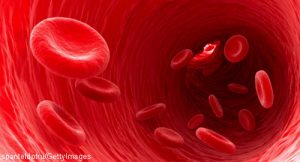 Several novel insights recently reported by the Outcome Measures in Rheumatology (OMERACT) Vasculitis Working Group get the rheumatology community closer to a core set of domains for large vessel vasculitis and will be used to establish outcome measures for use in clinical trials.1 These insights address definitions of subclinical disease activity in large vessel vasculitis and take into account patient perspectives regarding the aspects of therapy response important to them, such as pain and fatigue.2
Several novel insights recently reported by the Outcome Measures in Rheumatology (OMERACT) Vasculitis Working Group get the rheumatology community closer to a core set of domains for large vessel vasculitis and will be used to establish outcome measures for use in clinical trials.1 These insights address definitions of subclinical disease activity in large vessel vasculitis and take into account patient perspectives regarding the aspects of therapy response important to them, such as pain and fatigue.2
Clinical trials will now have validated definitions of remission, flare and patient-acceptable symptom state [PASS] to use. “The development of the definitions will provide a standardized approach—a tailored tool specifically designed for [large vessel vasculitis],” says Sibel Zehra Aydin, MD, a rheumatologist and associate professor of rheumatology at the University of Ottawa in Ontario, Canada. Dr. Aydin is the lead author of this latest OMERACT report.
Building Consensus
OMERACT is an independent initiative of international rheumatology health professionals interested in the development and validation of outcome measures in rheumatic diseases. Individual OMERACT groups hold consensus conferences every two years. The ongoing work of this OMERACT group has been to employ a data-driven approach to developing a core set of domains to shape standardized outcome measures for clinical trials of large vessel vasculitis treatments.
The comprehensive review of the literature conducted by this working group several years ago demonstrated a lack of standardized outcome measures for large vessel vasculitis.2,3 No broadly accepted definitions of important outcomes, such as disease activity or response to therapy, exist, Dr. Aydin explains. She also notes randomized controlled trials conducted for treatments targeting large vessel vasculitis diseases, such as Takayasu’s arteritis and giant cell arteritis, have usually based definitions of relapse and remission on the presence or absence of signs and symptoms and/or acute phase reactants. These measures are not consistent across studies.4
In 2016, the OMERACT group proposed a preliminary set of core domains for use in clinical trials of large vessel vasculitis, with additional disease-specific elements, such as pain and fatigue.5 From this preliminary set of domains, the group has been working to further identify subclinical disease activity and patient perspectives for outcome measures.
Subclinical Disease Activity & Patient Outcomes
Published data and clinical advances, such as PET (positron-emission tomography), are making it easier to identify large vessel vasculitis patients who appear to be in clinical remission but who still demonstrate disease activity.5,6 This ability is leading rheumatologists to discover subcategories of large vessel vasculitis, notes Antoine Sreih, MD, a rheumatologist and assistant professor of clinical medicine at Penn Medicine in Philadelphia. Dr. Sreih specializes in caring for large vessel vasculitis patients and is a member of the OMERACT working group.6,7
